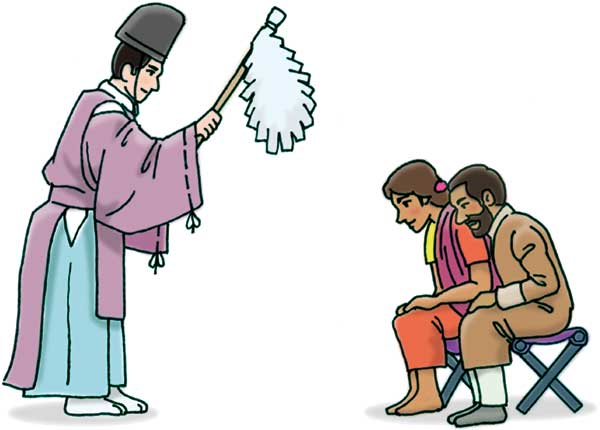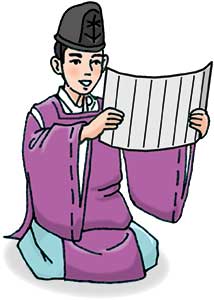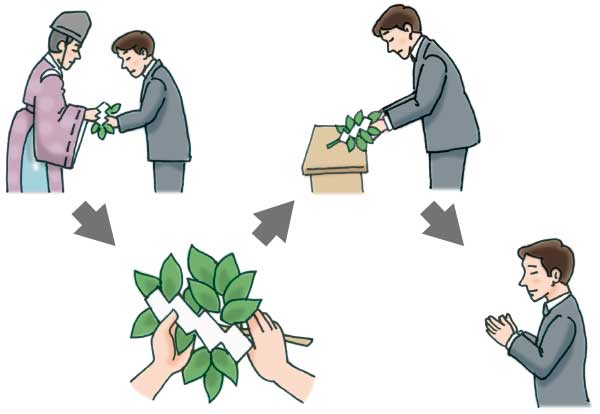- HOME
- About Jinja - Gokito
About Shrines
Gokito
A gokito follows the same structure as all jinja ceremonies, called matsuri. This is what you can expect.
Purification

In Shinto, it is believed that people pick up impurity in their daily lives, both from things that they do, and things that happen to them, such as illness or natural disasters. Purification, called “oharai”, is therefore a central part of every Shinto ritual. Through this, people are thought to recover their natural standing, and resume an active role in society.
Everyone, and everything, must be purified before the matsuri. This is called “oharai” in Japanese. At most jinja, a priest recites a short purification prayer, and then waves an “ohnusa” over the people and offerings involved in the matsuri, as shown in the picture. Some jinja use a branch of an evergreen tree, with the leaves attached. You should bow your head while the priest is purifying you.
Offerings
Offerings are made to the kami as part of the ceremony. They may be placed before the kami during the ceremony, or already be there before it starts. Rice, sake, rice cakes, fish, vegetables, fruit, salt, and water are common offerings.
Prayer
 The presiding priest goes before the kami and recites a prayer, called a “norito” in Japanese. These prayers are written in ancient Japanese, and convey your request to the kami. Everyone should bow their heads while the norito is being offered.
The presiding priest goes before the kami and recites a prayer, called a “norito” in Japanese. These prayers are written in ancient Japanese, and convey your request to the kami. Everyone should bow their heads while the norito is being offered.
Reverence
 After the norito, everyone pays reverence to the kami. This follows the same etiquette as described earlier, and may also involve offering a small evergreen branch with narrow folded paper tied to it, called a “tamagushi”. First, hold it vertically with the leaves upwards in front of your chest, and silently offer your prayer. When you place the tamagushi on the table, the stem should point away from you, with the leaves towards you. It is common for one member of a group to offer the tamagushi on behalf of everyone, but all members should bow and clap together once it has been offered.
After the norito, everyone pays reverence to the kami. This follows the same etiquette as described earlier, and may also involve offering a small evergreen branch with narrow folded paper tied to it, called a “tamagushi”. First, hold it vertically with the leaves upwards in front of your chest, and silently offer your prayer. When you place the tamagushi on the table, the stem should point away from you, with the leaves towards you. It is common for one member of a group to offer the tamagushi on behalf of everyone, but all members should bow and clap together once it has been offered.
Sacred Dance
At larger jinja, miko, female attendants, may offer sacred dance, called “kagura”, before the reverence. At some jinja, you may be able to request this, or it may be part of the normal ceremony. Smaller jinja, however, usually do not have miko who are able to perform the dances.
- HOME
- About Jinja - Gokito